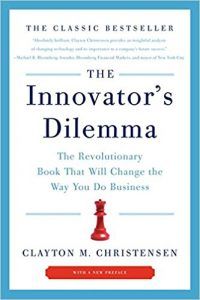
Book Summary: The Innovator's Dilemma by Clayton Christensen
At some point, the incumbent’s product’s performance exceeds the demand of most customers. Then the “edge” that these performance metrics provided is lost, and the customers’ value proposition changes. They start valuing some other metrics, along which a disruptor’s product has better performance. The disruptor has an early mover’s advantage as well as leading to the demise of the incumbent.
